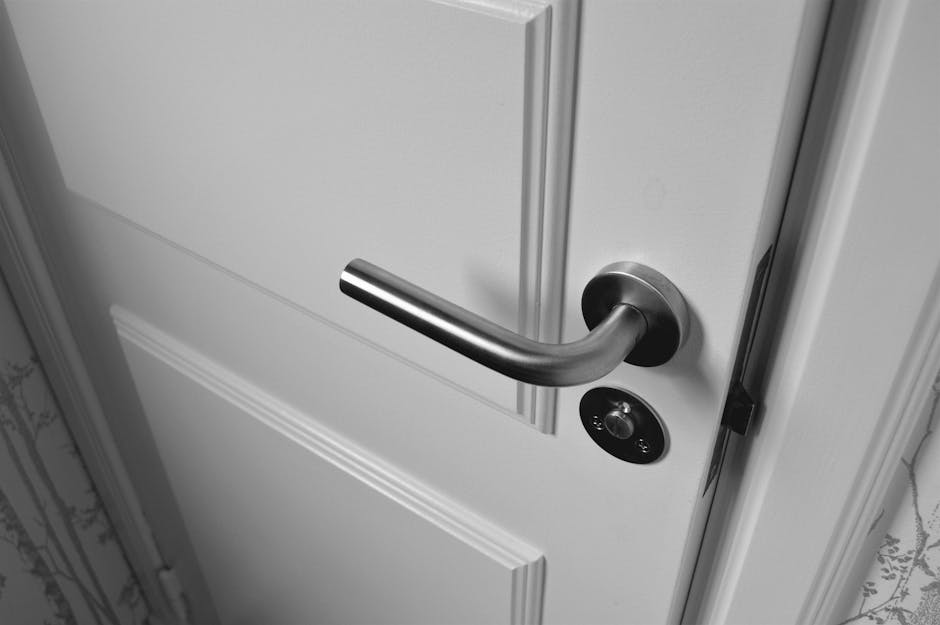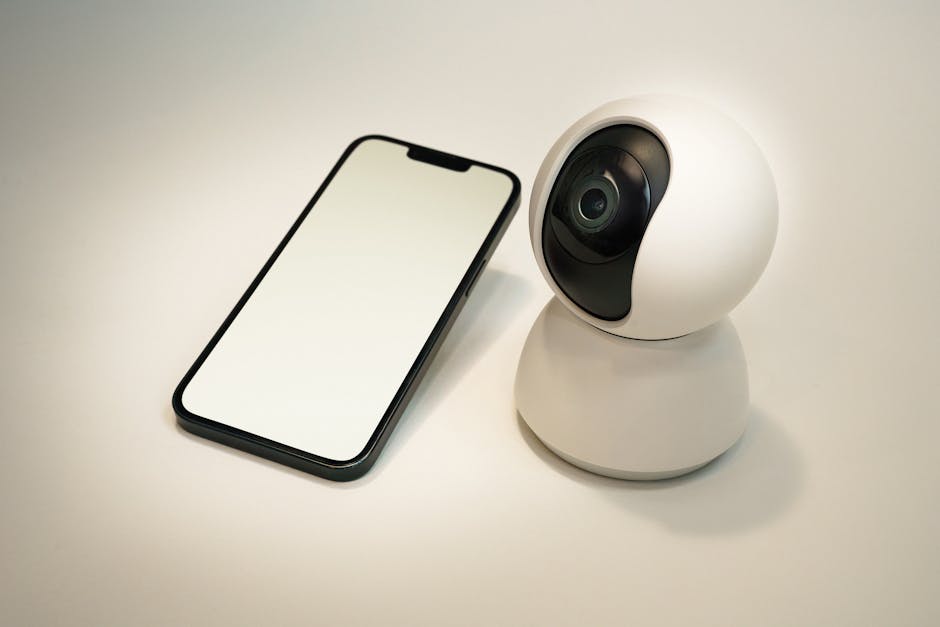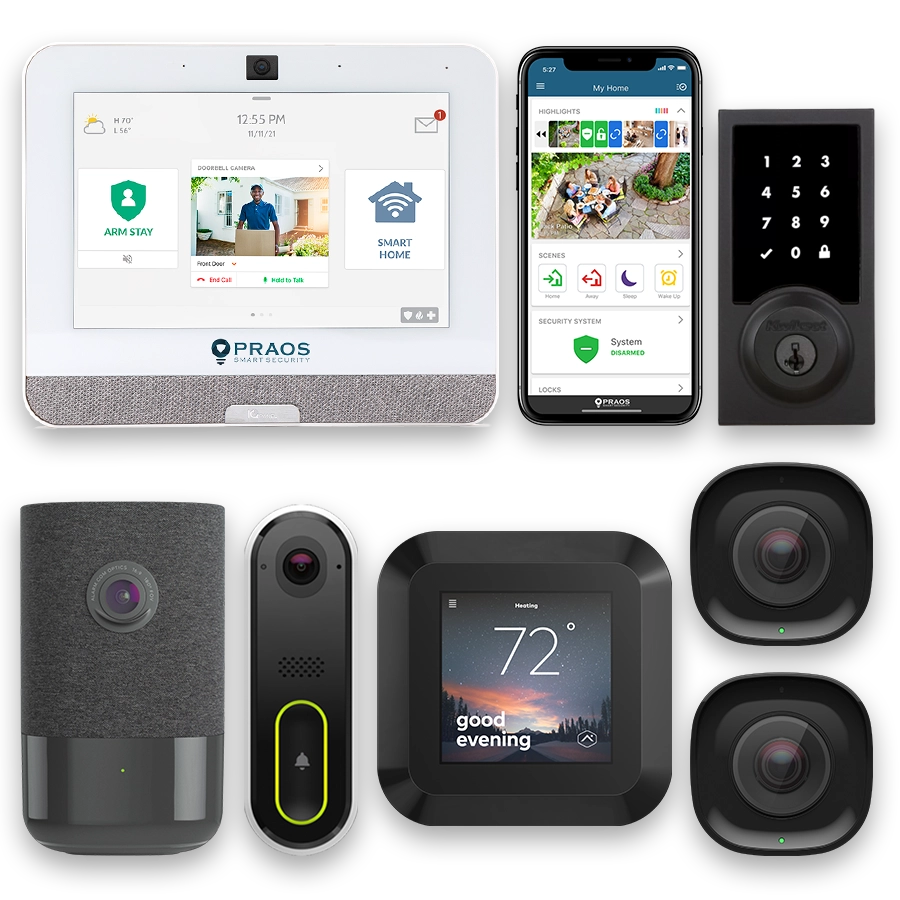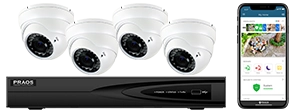- Introduction to Access Control and Its Importance in Modern Business
- Technological Advancements in Access Control Systems
- Integrated Monitoring Solutions: Enhancing Security and Efficiency
- The Role of Artificial Intelligence and Machine Learning in Access Control
- Regulatory and Compliance Considerations in Access Control Systems
- Future Outlook: Predictions and Trends in Access Control and Monitoring Solutions
Introduction to Access Control and Its Importance in Modern Business
Access control is a fundamental aspect of security for modern businesses, involving the selective restriction of access to a place or other resource. Ensuring that only authorized personnel can access specific areas or information is crucial for protecting assets, data, and ensuring operational continuity.
Access control systems have evolved significantly, and today they are not just about securing physical spaces but also safeguarding digital data and ensuring compliance with various regulations. This multifaceted approach involves several key components:
- Physical Access Control: Involves mechanisms such as locks, security personnel, biometric scanners, and card access systems that restrict entry to physical locations.
- Logical Access Control: Ensures that access to computer networks, data, and digital resources is limited to authorized users through methods like passwords, token-based devices, and cryptographic keys.
- Identity Management: A system that verifies and manages users’ identities and their access permissions to various resources within an organization.
The importance of access control in modern business cannot be overstated. With the rising threats of cyber-attacks, data breaches, and physical intrusions, having a robust access control system is vital for mitigating risks. Effective access control helps not only in preventing unauthorized access but also in monitoring and recording access events for future analysis and auditing.
Research from the International Data Corporation (IDC) suggests that global spending on security-related hardware, software, and services is expected to reach $174.7 billion by 2024. This investment highlights the growing awareness and dedication of businesses towards strong access control measures.
Key Benefits of Access Control Systems
Implementing access control systems offers a wide array of benefits:
- Enhanced Security: Prevent unauthorized access and detect potential threats.
- Compliance: Meet legal and regulatory requirements.
- Operational Efficiency: Streamline the management of access rights and user credentials.
- Audit Trail: Maintain detailed logs of access events for accountability and review.
Common Components of Access Control Systems
Effective access control systems are comprised of various components:
| Component | Description |
|---|---|
| Access Cards or Key Fobs | Physical devices issued to users for gaining access to secured areas. |
| Biometric Readers | Devices that use fingerprint scanning, facial recognition, or iris recognition for user identification. |
| Control Panels | Central units that process and respond to access requests. |
| Access Management Apps | Software that allows administrators to assign access rights and monitor access points. |
In conclusion, access control is indispensable for modern businesses aiming to protect their physical and digital assets. With continuous advancements in technology, these systems are becoming more sophisticated and integral to comprehensive security strategies.
Technological Advancements in Access Control Systems
As businesses strive to protect their physical and digital assets, technological advancements in access control systems are providing enhanced security solutions. These cutting-edge technologies not only deter unauthorized access but also streamline operations and ensure comprehensive surveillance capabilities.
Biometric Authentication
Biometric authentication is increasingly being deployed in access control systems. This technology uses unique physiological characteristics such as fingerprints, iris patterns, and facial features to verify identity. According to a report by MarketsandMarkets, the biometric system market is projected to reach USD 65.3 billion by 2024, driven by the need for robust security and the convenience of biometric solutions.
Unlike traditional key card systems, biometric authentication ensures a higher level of security by making it nearly impossible for unauthorized individuals to gain access without the rightful owner being present. Moreover, advancements in biometric technology have significantly reduced error rates, improving reliability and efficiency.
Mobile-Based Access Control
The rise of smartphones has paved the way for mobile-based access control systems. This method allows employees to use their smartphones as digital keys, enabling seamless and secure entry to premises. Mobile access control systems employ technologies such as Bluetooth, Near Field Communication (NFC), and QR codes to grant or restrict access.
According to a report by HID Global, mobile access adoption is growing, with 54% of respondents indicating an interest in using mobile devices for access control. The convenience and flexibility of mobile-based access systems are major factors contributing to their popularity. Additionally, mobile credentials can be easily managed and revoked in real-time, enhancing security management.
Cloud-Based Access Control
Cloud-based access control systems are revolutionizing the way businesses manage security. By leveraging cloud technology, these systems provide centralized management, real-time monitoring, and remote access capabilities. Security administrators can manage access permissions from anywhere, ensuring swift response to security incidents.
Research by Gartner indicates that by 2023, more than 60% of businesses will use cloud-based security solutions, reflecting the growing trust in these technologies. Cloud-based systems offer scalability and flexibility, allowing organizations to easily integrate new access points and adapt to changing security needs.
Integration with Other Security Systems
Modern access control systems are increasingly being integrated with other security solutions, such as video surveillance, intrusion detection, and alarm systems. This integration creates a cohesive security environment where multiple systems work together to provide comprehensive protection. For instance, combining access control with video surveillance can help verify the identity of individuals entering secured areas.
The Security Industry Association (SIA) reported that integration of access control with other security systems is one of the top trends in the industry. Integrated systems provide enhanced situational awareness, improved incident response, and streamlined security operations.
Cybersecurity Enhancements
As access control systems become more connected and integrated, ensuring robust cybersecurity measures is essential. Cyber threats can compromise access control systems, leading to unauthorized access and data breaches. Therefore, modern access control solutions incorporate advanced encryption, secure communication protocols, and regular software updates to safeguard against cyber threats.
The 2021 IBM Cost of a Data Breach Report highlights that the average cost of a data breach is USD 4.24 million, emphasizing the critical need for robust cybersecurity measures in access control systems. Businesses must prioritize cybersecurity to protect both physical and digital assets.
In summary, technological advancements in access control systems are transforming the way businesses secure their premises. Biometric authentication, mobile-based access control, cloud-based solutions, integration with other security systems, and enhanced cybersecurity are key trends that are enhancing security and operational efficiency.
Integrated Monitoring Solutions: Enhancing Security and Efficiency
In the contemporary landscape of access control, integrated monitoring solutions stand as pivotal advancements, offering enhanced security and operational efficiency for businesses. Companies like Praos are leveraging these innovations to provide a seamless and comprehensive security experience through connected solutions that go beyond traditional setups.
At Praos, the emphasis on ensuring the safety of families and homes translates into a robust offering for businesses as well. Their commitment extends past basic security system installations, incorporating award-winning service and local expertise tailored to meet specific needs. Through the deployment of integrated monitoring solutions, Praos provides a cohesive, all-in-one system that combines security, automation, and surveillance.
Components of Integrated Monitoring Solutions
Integrated monitoring solutions typically consist of several core components:
- Security Surveillance Cameras
- Automated Access Control Systems
- Intrusion Detection Systems
- Environmental Monitoring Sensors
These components are managed centrally, usually via a single application, allowing for streamlined operations and real-time monitoring. This integration ensures that every security angle is covered, enhancing overall safety and operational efficiency.
Customizable Solutions
Praos excels in offering customized smart home systems tailored to the unique needs and budgets of their clients. This customization is crucial for businesses that require specific protocols for sensitive areas or need to adhere to particular industry regulations. The flexibility of these systems allows for scalability and easy adaptation as security needs evolve.
Cost and Accessibility
Implementing these advanced security systems is also accessible in terms of cost. Praos offers competitive pricing on their monitored systems, starting at just $19.95 per month. New customers benefit significantly from promotions like free equipment and free installation, reducing initial setup costs.
| Service | Price |
|---|---|
| Standard Monitoring | $19.95/month |
| Premium Monitoring | $29.95/month |
Table 1: Pricing for Monitoring Services at Praos
Remote Accessibility
One of the standout features of Praos’s integrated monitoring solutions is the ability to monitor and manage the system from anywhere. With their connected app, users can oversee security, automation, and surveillance remotely, providing peace of mind and enhancing response times during security incidents.
By combining leading-edge technology with a holistic and customer-focused approach, Praos exemplifies how integrated monitoring solutions are reshaping security protocols for businesses, ensuring robust protection and operational efficiency.
The Role of Artificial Intelligence and Machine Learning in Access Control
Artificial Intelligence (AI) and Machine Learning (ML) are rapidly transforming the field of access control, providing businesses with a range of sophisticated solutions for enhancing security and operational efficiency. As these technologies continue to evolve, they are integrating seamlessly with traditional access control systems to offer smarter, more reliable security measures.
The implementation of AI and ML in access control systems primarily focuses on improving accuracy and reducing the need for human intervention. These technologies can analyze vast amounts of data in real-time, identifying patterns and anomalies that could indicate potential security threats. For instance, AI-driven facial recognition systems are becoming more prevalent, offering a high level of accuracy and efficiency in identifying authorized personnel.
ML algorithms are particularly effective in predictive analytics, enabling systems to predict and prevent security breaches before they occur. By continuously learning from historical data and evolving threats, ML models can improve the decision-making process in access control, identifying unusual behavior that could signal a breach. This proactive approach significantly enhances the capability of security teams and reduces response times.
Another significant benefit of incorporating AI and ML in access control systems is the automation of routine tasks, such as managing access rights and monitoring user activity. AI-based tools can automatically adjust access permissions based on predefined rules and criteria, minimizing the risk of human error and ensuring that only authorized individuals have access to sensitive areas.
The integration of AI with biometric systems also introduces multifactor authentication methods that are highly secure. Combining facial recognition, fingerprint scanning, and other biometric data, AI-powered systems offer robust verification processes that are difficult to forge or bypass. This multi-layered security approach significantly enhances protection against unauthorized access.
AI and ML are also driving advancements in remote monitoring solutions. For instance, intelligent surveillance systems can analyze video feeds in real-time, detecting suspicious activities and triggering immediate alerts to security personnel. This enhances situational awareness and allows for swift responses to potential threats.
Moreover, the use of AI in access control systems has been shown to provide cost-effective solutions for businesses. By automating various processes and improving the efficiency of security measures, companies can reduce operational costs and allocate resources more effectively.
Overall, the integration of AI and ML in access control systems represents a significant step forward in fortifying businesses with advanced security measures. As these technologies continue to develop, they promise to deliver even more innovative solutions that enhance both security and operational efficiency.
Regulatory and Compliance Considerations in Access Control Systems
The implementation of access control systems in businesses is not only a matter of security but also a requirement to comply with various regulatory and compliance standards. Adhering to these standards ensures that businesses mitigate risks, avoid legal pitfalls, and establish trust with customers and stakeholders.
Regulations such as the General Data Protection Regulation (GDPR) and the Health Insurance Portability and Accountability Act (HIPAA) have specific requirements pertaining to security and access control. Companies must ensure that access to sensitive information is strictly controlled and monitored to meet these standards.
General Data Protection Regulation (GDPR): Enforced by the European Union, GDPR mandates that organizations protect the personal data and privacy of EU citizens. Access control systems are required to limit who can access personal data and ensure that all access points are secure. Non-compliance with GDPR can result in substantial fines.
Health Insurance Portability and Accountability Act (HIPAA): HIPAA sets the standard for protecting sensitive patient data in the healthcare industry. Organizations dealing with protected health information (PHI) must have physical, network, and process security measures in place, including robust access control systems to safeguard data confidentiality and integrity.
Key Aspects of Compliance in Access Control:
- Authentication: Ensuring that only authorized users can access specific areas or data. This can involve multifactor authentication to enhance security.
- Authorization: Granting permissions based on roles to ensure users have access only to necessary information.
- Audit Trails: Keeping detailed logs of access events to identify and investigate any unauthorized attempts or breaches.
- Data Encryption: Protecting sensitive data by encrypting it during transmission and storage.
Below is a table summarizing the key compliance requirements for access control systems under GDPR and HIPAA:
| Requirement | Applicable Regulation |
|---|---|
| Control Physical Access | GDPR, HIPAA |
| Multi-Factor Authentication | GDPR, HIPAA |
| Role-Based Access Control | GDPR, HIPAA |
| Audit Logs | GDPR, HIPAA |
| Encryption of Data | GDPR, HIPAA |
By adhering to these regulatory requirements, businesses not only protect themselves from legal repercussions but also uphold a high standard of security that fortifies their overall operational integrity. Remaining compliant is a continuing process that necessitates regular reviews and updates to access control systems and protocols in response to evolving threats and regulatory changes.
Future Outlook: Predictions and Trends in Access Control and Monitoring Solutions
The landscape of access control and monitoring solutions is continuously evolving, driven by rapid technological advancements and an ever-insistent demand for enhanced security measures. Anticipating the future trends in this domain requires a close examination of emerging technologies, changing regulatory landscapes, and the shifting priorities of modern businesses.
Biometric Advancements
As biometric technology matures, it is set to become a cornerstone of access control systems. Already, we see widespread adoption of fingerprint and facial recognition. Looking ahead, more sophisticated biometric methods, such as iris recognition and vein pattern authentication, are likely to gain traction. These technologies promise higher accuracy and a reduced risk of spoofing compared to traditional methods.
Internet of Things (IoT) Integration
IoT continues to revolutionize access control by enabling interconnected devices to communicate and synchronize seamlessly. Future systems will leverage IoT to create dynamic access environments where permissions can be adjusted in real-time based on contextual data. For instance, access permissions could be linked with environmental sensors, occupancy data, and user movement patterns to enhance security and efficiency.
Artificial Intelligence and Predictive Analytics
AI and machine learning will play an increasingly crucial role in predictive analytics for access control. By analyzing vast quantities of data from access events, these technologies can identify patterns and predict potential security breaches before they occur. Predictive analytics can help in dynamically adjusting security protocols, providing a proactive rather than reactive security posture.
Cloud-Based Solutions
The shift towards cloud-based access control systems is expected to continue. These systems offer enhanced scalability, easier management, and improved accessibility. Moreover, cloud-based platforms facilitate better integration with other security systems and allow for the centralized collection and analysis of access data, further improving the efficiency and responsiveness of security measures.
Enhanced Mobile Integration
With the ubiquitous presence of smartphones, mobile-based access control solutions will become increasingly common. These solutions are not only convenient but also offer multifactor authentication options by combining mobile devices with biometrics or personal identification numbers (PINs). The continued development of secure communication protocols will ensure that mobile access remains both reliable and secure.
Compliance with Privacy and Security Regulations
Future access control systems will need to comply with a growing list of privacy and security regulations. As governments and regulatory bodies introduce stricter standards, ensuring compliance will become a critical component of access control strategies. Businesses will need to adopt systems that can not only secure physical and digital assets but also maintain the privacy and rights of individuals.
In conclusion, the future of access control and monitoring solutions lies in the integration of advanced technologies and the ability to adapt to new regulations and threats swiftly. Businesses that invest in cutting-edge, versatile, and compliant access control systems will be better positioned to safeguard their assets and maintain operational efficiency in an increasingly complex security landscape.





